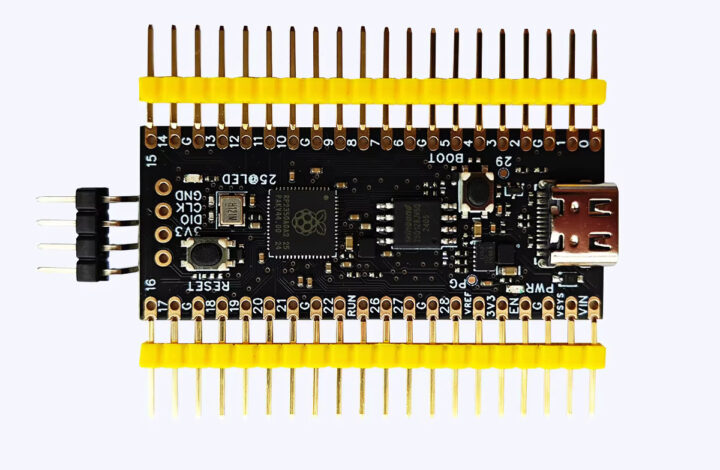HiFi-Amped is a Raspberry Pi Audio HAT with dual DACs and class-D amplifiers

Sonocotta’s HiFi-Amped is a Raspberry Pi Audio HAT designed for Raspberry Pi single-board computers. It features dual PCM5100 DACs and TPA3110 (2x15W @ 8-Ω or 1x 30-W @ 4-Ω) class D amplifiers for high sound quality and power efficiency. Key features of this module include support for both small and large speakers, an external power source to drive speakers and power the Raspberry Pi, and the ability to shut down the amplifiers using GPIO pins for minimal noise when not in use. This makes it ideal for creating a Raspberry Pi-based media center or audio streaming setup. HiFi-Amped specifications: Compatibility – Raspberry Pi 2, 3, 4, 5, Zero, and potentially others with a Raspberry Pi-compatible GPIO header Amplifier – 2x Texas Instruments TPA3110D2 Class-D amplifiers Output Power 4x 10W into 8 ohms @ 13V 4x 15W into 8 ohms @ 16V 2x 30W into 4 ohms @ 16V (bridged mode) [...]
The post HiFi-Amped is a Raspberry Pi Audio HAT with dual DACs and class-D amplifiers appeared first on CNX Software - Embedded Systems News.


















